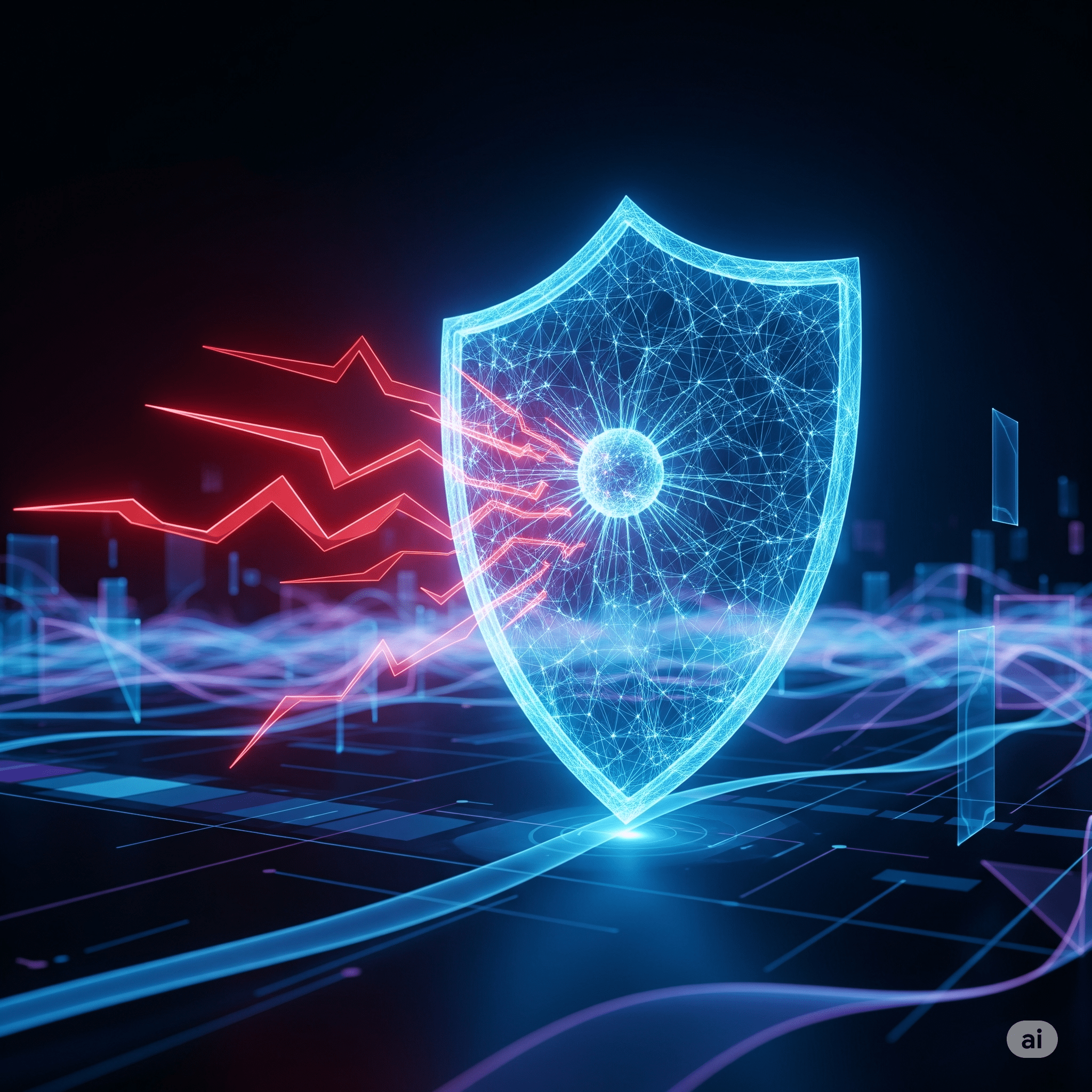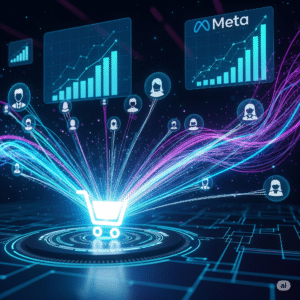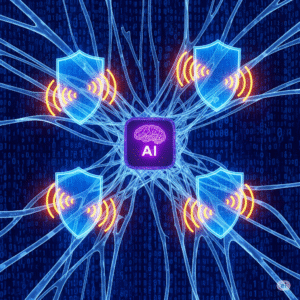For decades, the model for digital defense has been the fortress. We build strong walls (firewalls), install vigilant guards at the gate (antivirus software), and hope for the best. But today, the attackers are no longer just laying siege to the walls. They are masters of disguise, capable of tunneling underneath, impersonating trusted insiders, and launching attacks so new and sophisticated that our old rulebooks are useless. The digital battlefield has changed, and the fortress model is crumbling.
If you’re relying solely on traditional security tools, you’re not just behind the curve; you’re a sitting duck. The sheer volume and velocity of modern cyber threats—from zero-day exploits to polymorphic malware and AI-powered phishing campaigns—have completely overwhelmed human-led security teams. This is where the revolution begins. The new frontier of defense isn’t a higher wall; it’s a network of millions of intelligent, autonomous guards patrolling every inch of your digital territory. This is the world of AI cybersecurity.
This is not a far-off concept from a sci-fi movie. It is the single most critical evolution in digital defense, available and necessary for businesses of all sizes right now. This guide will demystify the world of AI cybersecurity and AI threat detection. We will explore how it works, why it’s essential, and how you can begin implementing this proactive, intelligent defense to protect your organization from the threats of tomorrow, today.
The Failing Arms Race: Why Traditional Security Can’t Keep Up
The core problem with traditional cybersecurity is that it’s fundamentally reactive. It relies on “signatures”—known patterns of malicious code or behavior. An antivirus program only knows how to stop a virus it has seen before. A firewall blocks traffic based on predefined rules. This approach creates critical vulnerabilities in the face of modern attack vectors.
Here’s why the old guard is failing:
- Zero-Day Attacks: Attackers constantly create brand-new malware and exploits. Since these threats have no known signature, traditional tools are completely blind to them until it’s too late.
- Insider Threats: A malicious actor with legitimate credentials or an employee who accidentally clicks a phishing link can bypass perimeter defenses easily. Rule-based systems struggle to differentiate between normal and malicious insider behavior.
- Alert Fatigue: Modern networks generate millions of events per day. Security analysts are flooded with so many alerts—most of them false positives—that it becomes impossible to identify the real threats in the digital noise. This “alert fatigue” is a leading cause of missed threats and security team burnout.
- The Speed of Attacks: Automated attacks can compromise a network in minutes, long before a human analyst has even had a chance to review the initial alert.
This constant, losing game of cat-and-mouse is unsustainable. We need to move from a reactive posture of “incident response” to a proactive one of “threat anticipation.” This is the fundamental shift enabled by AI cybersecurity.
The Dawn of a New Defense: What is AI Cybersecurity?
AI cybersecurity flips the traditional model on its head. Instead of looking for known “bad” behavior, it starts by learning what “good” looks like. It uses machine learning algorithms to ingest vast amounts of data from your network—logins, file access, data flows, device activity—to build a highly detailed, dynamic baseline of normal operational behavior. Think of it as an immune system for your organization; it knows what belongs and can instantly spot a foreign invader.
Once this baseline is established, the AI threat detection engine works 24/7 to identify anomalies and deviations. A user in accounting who suddenly starts trying to access sensitive developer code at 3 AM? An employee’s laptop that begins sending unusually large packets of encrypted data to an unknown server? A medical IoT device that starts communicating in a way it never has before? A traditional firewall would miss all of this. An AI system flags it instantly as a high-risk anomaly that requires investigation.
The Core Components of an AI Cybersecurity Strategy
A robust AI cybersecurity framework is built on a few key technological pillars working in concert. These systems are designed to see what humans can’t and act at machine speed.
- Behavioral Analytics & Anomaly Detection: This is the heart of AI security. By continuously monitoring user and entity behavior (UEBA), the AI can detect subtle deviations that indicate a compromised account, insider threat, or active malware.
- Predictive Threat Intelligence: AI doesn’t just react; it predicts. By analyzing global threat data and correlating it with your organization’s specific vulnerabilities, it can predict which types of attacks you are most likely to face and recommend proactive measures.
- Automated Incident Response: When a credible threat is detected, AI can take immediate, automated action. This could mean isolating a compromised device from the network to stop a ransomware attack from spreading or locking a user account that shows signs of being hijacked. This machine-speed response is crucial for containing damage.
Case Studies in the Trenches: AI Cybersecurity in Action
Let’s move from theory to real-world impact. Here is how AI threat detection is making a tangible difference for businesses facing sophisticated attacks.
Case Study 1: “FinSecure Bank,” a Mid-Sized Financial Institution
The Challenge: FinSecure was concerned about insider threats—both malicious and accidental. A disgruntled employee or a compromised credential could lead to a catastrophic data breach, costing millions in fines and reputational damage. Their existing security tools couldn’t differentiate between legitimate and malicious activity from a valid user account.
The Solution: They deployed an AI cybersecurity platform that specialized in User and Entity Behavior Analytics (UEBA). The AI spent two weeks learning the normal data access patterns for every employee. In its third week, it flagged an anomaly: an accountant’s credentials were being used to access and download large volumes of customer profile data between 2 AM and 4 AM, activity that was completely outside the user’s normal role and hours.
The Result: The system automatically locked the account and alerted the security team. The investigation revealed that the accountant’s login details had been stolen in a phishing attack and were being used by an external actor. The AI stopped a major data breach before a single customer record left the network.
Case Study 2: “CareFirst Hospital Network”
The Challenge: A hospital network’s biggest vulnerability was its fleet of thousands of connected IoT devices—IV pumps, heart monitors, and diagnostic machines. These devices couldn’t run traditional antivirus software and represented a massive, soft attack surface for ransomware.
The Solution: CareFirst implemented an AI threat detection solution that monitored network traffic. The AI learned the normal communication patterns for every device. One Tuesday morning, it detected that a series of IV pumps on one floor began trying to communicate with other devices on the network using a protocol they had never used before. This was the classic “lateral movement” behavior of a worm or ransomware.
The Result: Before a human could even react, the AI automatically quarantined the affected devices, severing their network connection and preventing the malware from spreading. As reported by security leaders like CrowdStrike, protecting these non-traditional endpoints is a key strength of AI-driven security.
A Beginner’s Guide to Implementing AI Threat Detection
Integrating AI cybersecurity doesn’t require you to rip and replace your entire infrastructure. It’s a strategic enhancement. Here is a simple workflow for getting started.
- Assess Your Current Security Posture & Data: Understand your key assets, vulnerabilities, and data sources. Good AI needs good data, so ensure you have centralized logging and a clear picture of your network topology.
- Define a Clear Objective: What is your most pressing security concern? Is it protecting against ransomware? Detecting insider threats? Securing your cloud environment? Start with a single, clear goal.
- Choose the Right AI Security Platform: Research leading platforms in the AI threat detection space. Look for solutions that match your objective, are known for their ease of use, and can integrate with your existing security tools. Many offer pilot programs.
- Start with a Focused Pilot: Don’t try to boil the ocean. Deploy the AI solution in “monitor-only” mode on one critical segment of your network first. This allows the AI to learn and lets your team get comfortable with the insights it generates without disrupting operations.
- Integrate and Empower Your Human Team: The goal of AI is to augment your human experts, not replace them. Use the AI to filter out the noise and surface only the most critical threats, allowing your analysts to focus their skills on high-level investigation and strategic response. As the NIST Cybersecurity Framework emphasizes, technology and people must work together.
Leading AI Cybersecurity Tools and Platforms
The market for AI cybersecurity is robust and growing. While there are many players, they generally fall into a few categories:
- Autonomous Response Platforms (Darktrace, Vectra AI): These are leaders in using self-learning AI to understand your network and detect and respond to threats in real-time, often without human intervention.
- Next-Generation Endpoint Protection (CrowdStrike, SentinelOne): These platforms use AI and behavioral analysis directly on endpoints (laptops, servers) to stop malware and fileless attacks that traditional antivirus software misses.
- Security Data Analysis (Microsoft Sentinel, Splunk): For teams that want to analyze their own data, these platforms use AI to help correlate events from across the enterprise, making it easier for human analysts to hunt for threats. They can visualize data from the tools above, creating a single pane of glass for your Security Operations Center (SOC).
- AI Hiring Small Business Recruitment
Conclusion: The Smartest Defense is a Learning Defense
The battle for digital security is now being fought between algorithms. Attackers are using AI to craft more sophisticated attacks, and our only hope is to fight fire with fire. AI cybersecurity is no longer a “nice-to-have” or a luxury for large enterprises. It is a fundamental, non-negotiable component of any modern security strategy.
By shifting from a reactive, signature-based model to a proactive, behavior-based one, you build a resilient, self-learning defense that can adapt as quickly as your adversaries. You empower your security team, protect your critical assets, and build a foundation of trust with your customers. In the new digital frontier, the strongest shield is the one that thinks.
Image Alt Text
A glowing shield representing AI cybersecurity protecting a network from threats.



